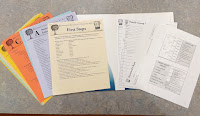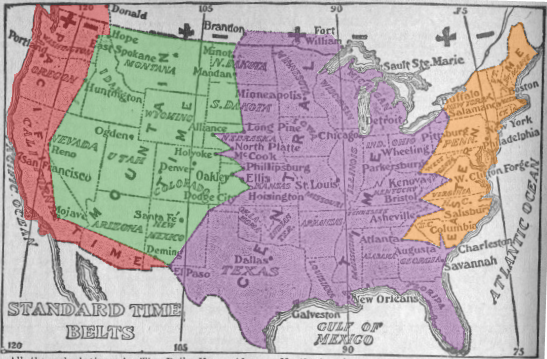- 23 and Me
- Ancestry DNA
- FamilyTree DNA
- Living DNA
- MyHeritage DNA.
 |
| Previous Beginner's Kit |
By Lauren Kuntzman
As we prepare to set our clocks back at 2:00 AM on November 7, historic newspapers help us learn how the residents of Medina fared with the first attempt at daylight saving time.
After other countries implemented daylight saving time, the United States enacted the “Standard Time Act of 1918” (also called the Calder Act). The act included two key elements:
Standardizing time zones across the country.
Enacting daylight saving time.
The two issues were entangled and led to much confusion.
Prior to the passage of the act, Medina was in the central time zone. The boundary was around the border of Ohio and Pennsylvania, as you can see on this map from 1913.
 |
| 1913 Map of U.S. "Standard Time Belts" |
From start to finish, Medina County’s first attempt at daylight saving time seems to have been chaotic. A Medina County Gazette headline gives us a clear indication as how the experience went, stating “Not Smoothly.”
The article from April 5, 1918, goes on to describe how much confusion the change created in Medina.
George High’s clock (which was used to regulate the time around town) was advanced, as was the courthouse clock, the B. & O. railroad, and the electric line. Churches, however, had not changed. Also adding to the confusion, as the fact that many factories in the area – including A. I. Root Company, Medina Bending Works, the Henry Miller Foundry Company, and the Medina Machine Company – all changed their workers’ schedules. This change was further complicated as the Gazette misunderstood the A. I. Root Company’s plans and published that their schedule began at 6:30 central time when, in fact, the company intended a shift to begin at 7:30 eastern time – effectively not changing the start time at all. George High's Clock, Medina, Ohio
Under the Standard Time Act of 1918, daylight saving time was scheduled to end October 27, 1918. Medina’s response was, again, one of confusion. Town clocks, post offices, and railroads reverted back to central time, but local factories and residents wanted to stay with eastern time. A Medina Sentinel article from November 1, 1918 describes it as an every-man-for-himself situation, and states “The result is that there is one fine mix-up, with betting odds that eastern time will finally win out.”
Complicating matters was a discussion about the location of the line dividing Eastern and Central Time Zones. It had been suggested that, rather than the following the Ohio and Pennsylvania border, the time zone should follow the New York Central railroad line, beginning around Toledo, catching Mansfield, then Columbus, and ending in Gallipolis. The end result was that Ohio was split into two time zones.
A few weeks after the end of the first daylight saving time, the Sentinel announced that Medina County would become part of the eastern standard time zone on January 1, 1919. Despite the change in time zones, at the end of March 1919, clocks were again supposed to be changed. The Gazette reported that the second go-round of daylight saving time for Medina was not any less chaotic than the first.
A few months later, in August 1919, daylight saving time was repealed. It would be several years, before the experiment would be tried again.
Want to learn more about daylight saving time in Medina County?
Please visit our new blog address at: https://vwmfhcenter.blogspot.com/ A Basic Tutorial By Lisa Rienerth Before I begin with this librar...
